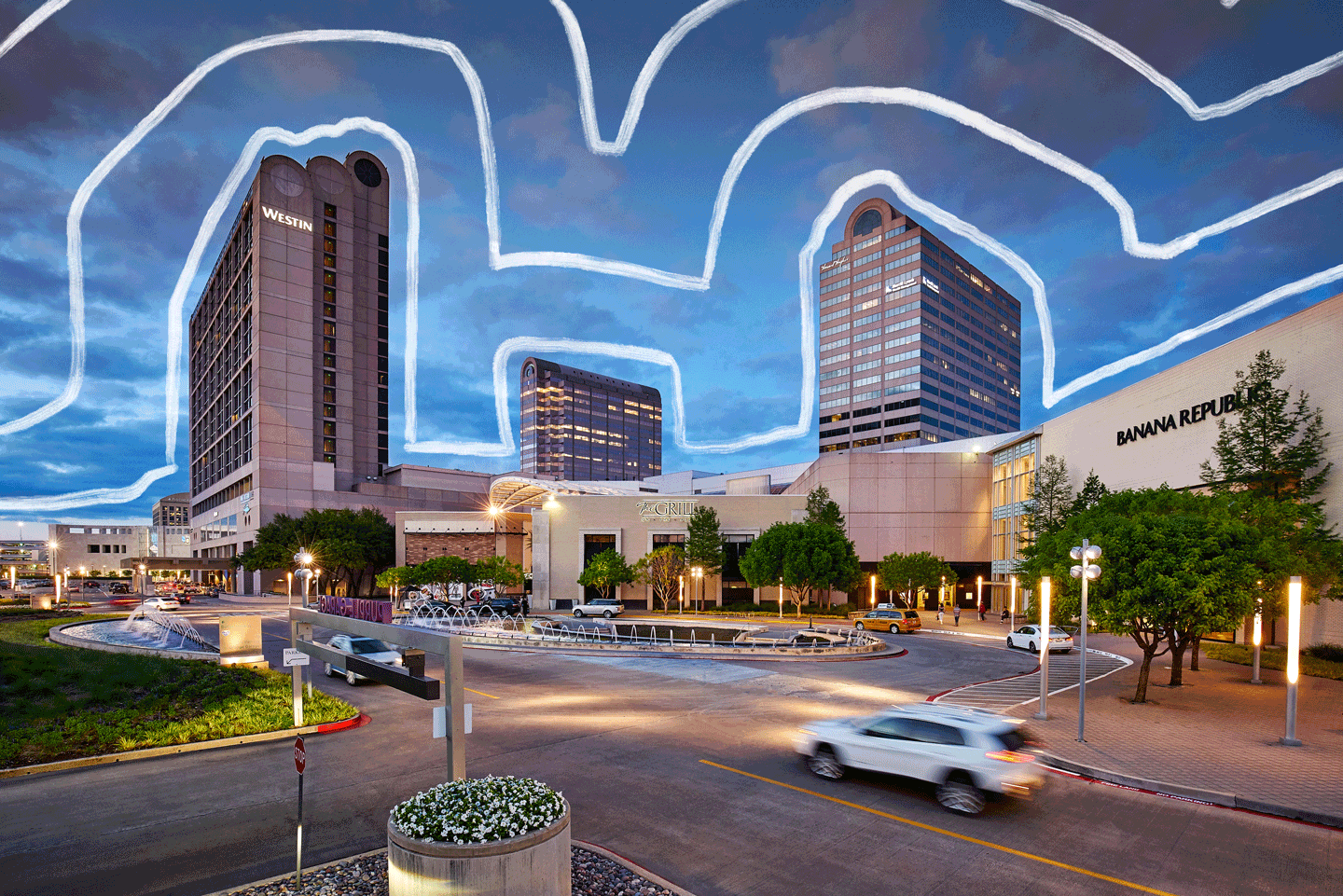A Conscious Place
How to Beat E-Commerce with Experiential Development
To meet constantly-evolving consumer expectations and demand, current mixed-use retail has needed reinventing. And while the worst of COVID-19 looks to be behind us, the pandemic accelerated future retail trends that already existed—whether that be a decrease in customer foot traffic, a greater incorporation of outdoor space, or an increase in e-commerce. But the days of brick and mortar in a post-COVID world are far from over. They just might look different.
The new remote workforce has led to an explosion of day-time populations in neighborhoods and communities all around the world. The inevitable next step is an increase in places of gathering and social activities as people crave to experience the social engagement we’ve lacked for so long.
Enter the Conscious Place philosophy, uniquely developed by Trademark—a good place that becomes great because of three things:
• It’s an active part of the community;
• It celebrates what makes the community unique; and
• It offers a gathering place that continually works to provide services that benefit the greater good.
For an example, look at Hillside Village, a property in Cedar Hill, Texas that underwent a redevelopment under Trademark’s guidance . Here, the rapid improvement made in identity and ambience was a testament to the role that intangibles play in the creation of a Conscious Place. At Hillside Village, sales and traffic increased by over 5% year-over-year while conservation efforts saved $262,000 worth of precious resources. Visitors and retailers took notice of the transformation as shown by the over 25,500 square feet of new leases that were signed after the center’s reinvention. Between the public amenities, ongoing conservation efforts, and stellar new roster of tenants, Hillside Village became a rejuvenated and conscious member of its community.
What is a Conscious Place?
The idea of a Conscious Place centers around stewarding, enhancing, and enriching the community. When the community is defined as stakeholders, shoppers, residents, the environment itself, and even stakeholders not normally considered in development (retail employees, out-of-town visitors, etc.), a developer is forced to think holistically. The old “if you build it, they will come” mentality doesn’t work anymore. Truly meeting the community’s needs starts by taking the time to step back, listen, and get to know the community’s residents.
The Conscious Place philosophy reflects the value of listening—how Trademark starts every redevelopment project. The best way to create a space where people will enjoy spending their hard-earned dollars for years to come is to start by listening and waiting for the input of others to provide the inspiration. Only then can we create something great. Then, if we can build a place that meets the needs of those most likely to engage with it, people will naturally gravitate to it and the community will eventually own it and rally around it.
How a retail redevelopment becomes a Conscious Place
In action, the philosophy revolves around aligning the built space to educate and inspire its visitors, while stewarding the land with eco-friendly features. This includes not only physically redesigning the property, but including community-engaging spaces and events, curated public art, free amenities and engaging curated brands through permanent and pop-up programs.
While the pandemic accelerated the need for the Conscious Place’s kind of community – and customer-centric method of development – the Conscious Place philosophy is the future of retail. And retailers have everything to gain by embracing it.
How Do We Do This?
Community is defined as stakeholders, shoppers, residents, the environment itself, and even stakeholders not normally considered in development – employees, visitors, to the neighbors who will never visit.
Our Conscious Places are broken into three primary components:
- The Built Space
• Community spaces, create an experience
• Redevelopment, brand design
• Free amenities - Educate | Inspire
• Public, organized events
• Curated public art
• Message boards
• Free public amenities
• Pop-up programs for up-coming retailers - Eco-Friendly
• Eco-conscious features
• An overall commitment to Trademark’s ESG Principles
THE PROCESS
To create this kind of special place, the “if you build it, they will come” mentality won’t work. How can you truly meet stakeholders’ needs if you don’t take the time to step back, listen, and get to know them first?
• Gather community, experts and stakeholders, listen, learn, brainstorm
• Plan, get feedback, build
• Effective merchandising plan

